Erik K. Henricson
Harnessing FFT for Rapid Community Travel Distance and Step Estimation in Children with DMD
Apr 04, 2025Abstract:Accurate estimation of gait characteristics, including step length, step velocity, and travel distance, is critical for assessing mobility in toddlers, children and teens with Duchenne muscular dystrophy (DMD) and typically developing (TD) peers. This study introduces a novel method leveraging Fast Fourier Transform (FFT)-derived step frequency from a single waist-worn consumer-grade accelerometer to predict gait parameters efficiently. The proposed FFT-based step frequency detection approach, combined with regression-derived stride length estimation, enables precise measurement of temporospatial gait features across various walking and running speeds. Our model, developed from a diverse cohort of children aged 3-16, demonstrated high accuracy in step length estimation (R^2=0.92, RMSE = 0.06) using only step frequency and height as inputs. Comparative analysis with ground-truth observations and AI-driven Walk4Me models validated the FFT-based method, showing strong agreement across step count, step frequency, step length, step velocity, and travel distance metrics. The results highlight the feasibility of using widely available mobile devices for gait assessment in real-world settings, offering a scalable solution for monitoring disease progression and mobility changes in individuals with DMD. Future work will focus on refining model performance and expanding applicability to additional movement disorders.
Automated Detection of Gait Events and Travel Distance Using Waist-worn Accelerometers Across a Typical Range of Walking and Running Speeds
Jul 10, 2023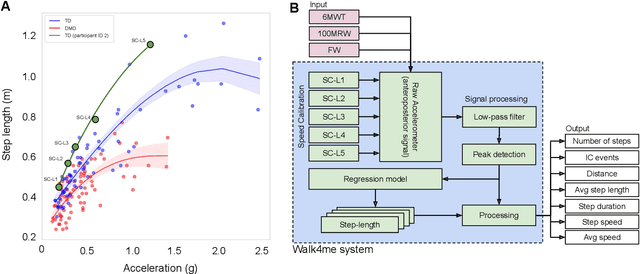
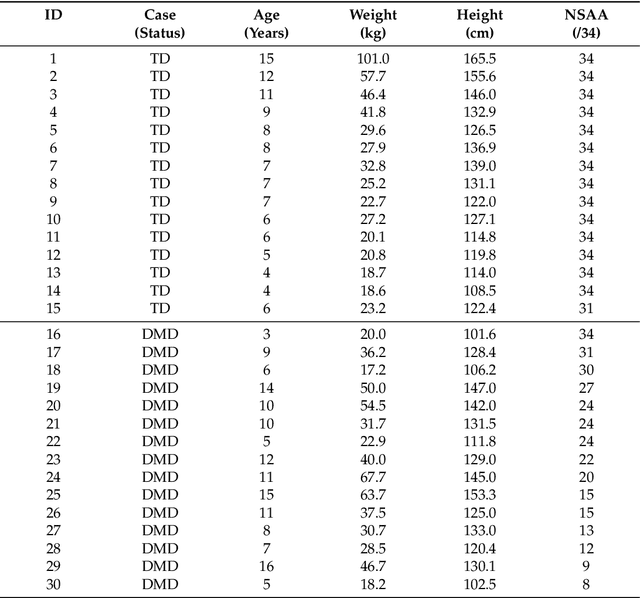
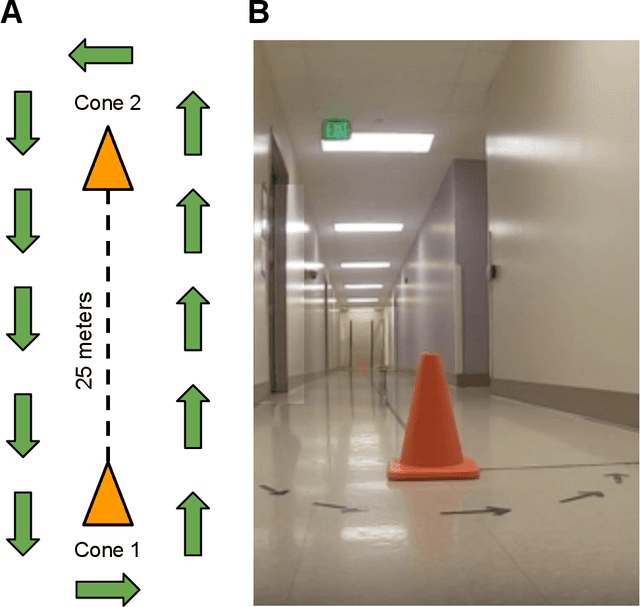
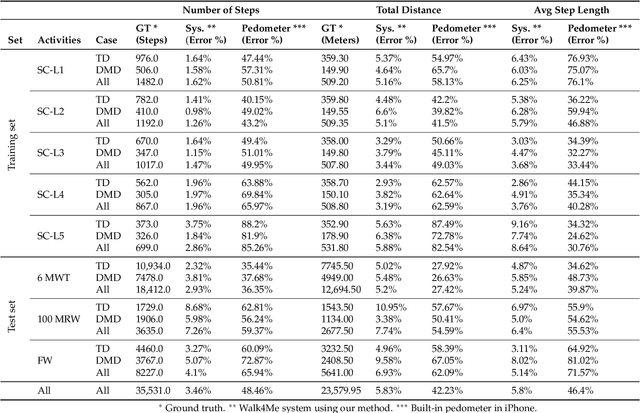
Abstract:Background: Estimation of temporospatial clinical features of gait (CFs), such as step count and length, step duration, step frequency, gait speed and distance traveled is an important component of community-based mobility evaluation using wearable accelerometers. However, challenges arising from device complexity and availability, cost and analytical methodology have limited widespread application of such tools. Research Question: Can accelerometer data from commercially-available smartphones be used to extract gait CFs across a broad range of attainable gait velocities in children with Duchenne muscular dystrophy (DMD) and typically developing controls (TDs) using machine learning (ML)-based methods Methods: Fifteen children with DMD and 15 TDs underwent supervised clinical testing across a range of gait speeds using 10 or 25m run/walk (10MRW, 25MRW), 100m run/walk (100MRW), 6-minute walk (6MWT) and free-walk (FW) evaluations while wearing a mobile phone-based accelerometer at the waist near the body's center of mass. Gait CFs were extracted from the accelerometer data using a multi-step machine learning-based process and results were compared to ground-truth observation data. Results: Model predictions vs. observed values for step counts, distance traveled, and step length showed a strong correlation (Pearson's r = -0.9929 to 0.9986, p<0.0001). The estimates demonstrated a mean (SD) percentage error of 1.49% (7.04%) for step counts, 1.18% (9.91%) for distance traveled, and 0.37% (7.52%) for step length compared to ground truth observations for the combined 6MWT, 100MRW, and FW tasks. Significance: The study findings indicate that a single accelerometer placed near the body's center of mass can accurately measure CFs across different gait speeds in both TD and DMD peers, suggesting that there is potential for accurately measuring CFs in the community with consumer-level smartphones.
Walk4Me: Telehealth Community Mobility Assessment, An Automated System for Early Diagnosis and Disease Progression
May 05, 2023
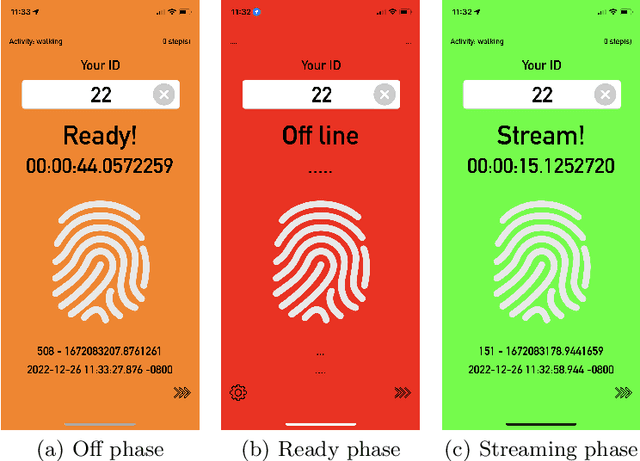
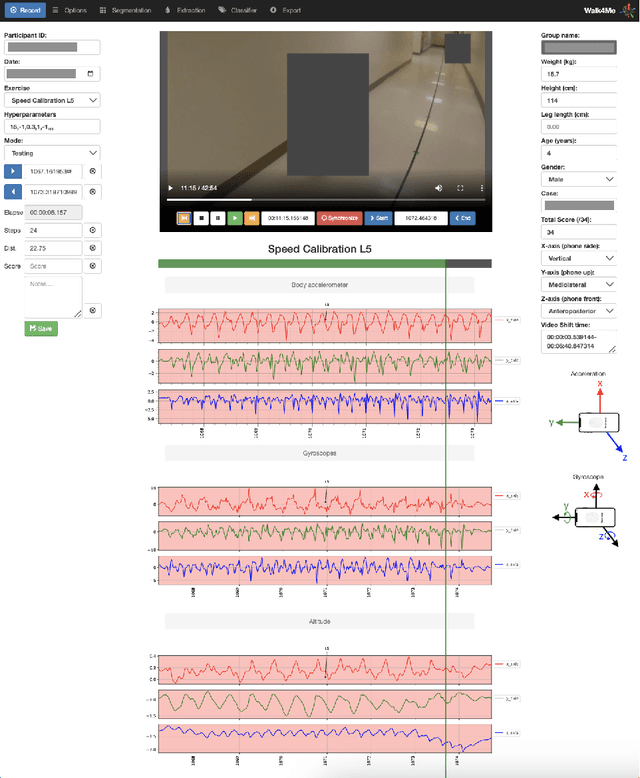
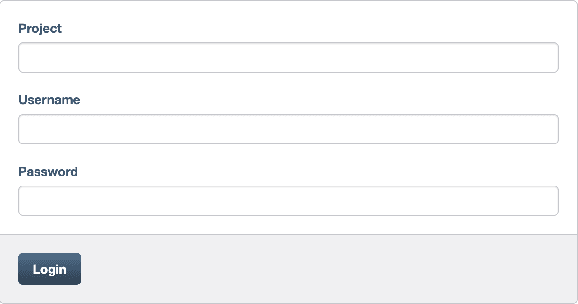
Abstract:We introduce Walk4Me, a telehealth community mobility assessment system designed to facilitate early diagnosis, severity, and progression identification. Our system achieves this by 1) enabling early diagnosis, 2) identifying early indicators of clinical severity, and 3) quantifying and tracking the progression of the disease across the ambulatory phase of the disease. To accomplish this, we employ an Artificial Intelligence (AI)-based detection of gait characteristics in patients and typically developing peers. Our system remotely and in real-time collects data from device sensors (e.g., acceleration from a mobile device, etc.) using our novel Walk4Me API. Our web application extracts temporal/spatial gait characteristics and raw data signal characteristics and then employs traditional machine learning and deep learning techniques to identify patterns that can 1) identify patients with gait disturbances associated with disease, 2) describe the degree of mobility limitation, and 3) identify characteristics that change over time with disease progression. We have identified several machine learning techniques that differentiate between patients and typically-developing subjects with 100% accuracy across the age range studied, and we have also identified corresponding temporal/spatial gait characteristics associated with each group. Our work demonstrates the potential of utilizing the latest advances in mobile device and machine learning technology to measure clinical outcomes regardless of the point of care, inform early clinical diagnosis and treatment decision-making, and monitor disease progression.
 Add to Chrome
Add to Chrome Add to Firefox
Add to Firefox Add to Edge
Add to Edge